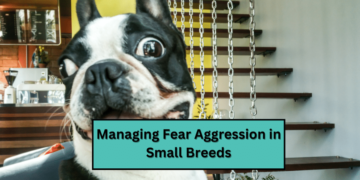Male dogs are known for their territorial instincts, often expressed through marking behaviors that can become a challenge for pet owners. While it’s a natural canine practice, excessive territorial marking, especially indoors, can disrupt the harmony of your home. In this article, we delve into effective strategies for reducing territorial marking behavior in male dogs. Understanding why dogs mark and how to manage this behavior can lead to a more peaceful coexistence and a happier environment for both you and your furry companion.
Understanding Territorial Marking
Territorial marking is a common behavior observed in many male dogs. It’s a way for them to communicate with other dogs and establish their presence in a particular area. When a dog leaves its scent, usually in the form of urine, it’s sending a message about its territory, social status, and even reproductive availability.
This behavior is rooted in a dog’s instinctual need to establish and maintain its territory. In the wild, marking helps dogs create boundaries and warn off potential intruders. It’s not solely about claiming space; it’s also about creating a familiar and comforting scent landscape for the dog.
In domestic settings, this behavior can be triggered by various factors, such as the presence of other dogs, unfamiliar people, or changes in the environment. Even if your dog is the only pet in your household, it may still feel the need to mark, especially if it detects scents from other animals outside.
It’s important to note that while marking is more prevalent in unneutered males due to higher testosterone levels, neutered males and even females can exhibit this behavior. Understanding the root causes and triggers of territorial marking is the first step in addressing and managing it effectively.
Common Triggers for Marking

Understanding what prompts a male dog to mark territory is crucial for addressing the behavior effectively. Here are some of the most common triggers for marking:
- Presence of Other Dogs: A dog may mark more frequently when other dogs are nearby, especially if they’ve also marked the area. This can happen during walks, in dog parks, or even in your yard if neighboring dogs are present.
- New Environments: Moving to a new home, rearranging furniture, or introducing new items to your household can prompt a dog to mark. These changes disrupt their familiar scent landscape, leading them to re-establish their presence.
- Unfamiliar People or Animals: Visitors, new family members, or even wildlife wandering close to your home can trigger marking. Dogs use their scent to communicate who the space belongs to.
- Stress and Anxiety: Changes in routine, separation anxiety, or stressful events can lead to increased marking as a coping mechanism.
- Sexual Maturity and Hormonal Changes: Intact males are more likely to mark, especially when they detect the scent of a female in heat. Even after neutering, some dogs may continue to mark due to established habits or residual hormonal influences.
- Asserting Dominance or Social Status: Dogs may mark to assert their dominance or maintain social hierarchy, especially in multi-pet households.
- Medical Issues: Sometimes, increased marking can be a sign of a urinary tract infection, bladder stones, or other health problems.
Identifying the specific triggers for your dog is essential. Once you know what sets off the marking behavior, you can work on strategies to reduce or eliminate it.
Spaying/Neutering and Its Impact
Spaying and neutering are common procedures that can significantly impact territorial marking behavior, especially in male dogs. Understanding the effects of these procedures can help you make informed decisions for your pet.
Hormonal Reduction:
Neutering a male dog involves the removal of the testicles, which are the primary source of testosterone. This reduction in hormones often leads to a decrease in territorial and sexually motivated behaviors, including marking.
Behavioral Changes:
Many pet owners report a noticeable change in their dog’s behavior post-neutering. Dogs may become less aggressive, less likely to roam, and exhibit fewer tendencies to mark territory. However, it’s important to note that neutering is not a guaranteed solution for all behavioral issues.
Age Considerations:
The age at which a dog is neutered can impact its effectiveness in reducing marking behaviors. Neutering at a younger age, before the dog starts marking, can be more effective in preventing the behavior from becoming a habit.
Habitual Behavior:
If a dog has been marking for a long time, the behavior might have become a habit. In these cases, neutering might not completely stop the marking. Additional behavioral training might be necessary.
Health Benefits:
Besides impacting territorial marking, neutering has several health benefits. It reduces the risk of testicular cancer and certain prostate problems.
Residual Effects:
In some cases, there might be residual hormonal effects post-neutering, and a dog may continue to mark. Usually, these tendencies decrease over time.
Consultation with a Veterinarian:
It’s essential to consult with a veterinarian to understand the best time for neutering and discuss its potential impact on your dog’s behavior. They can also provide insights into whether your dog’s marking behavior is likely to be influenced by the procedure.
In summary, spaying or neutering can be an effective measure in reducing territorial marking behavior in male dogs. However, it’s important to consider the dog’s age, the duration of the behavior, and individual tendencies. Sometimes, additional training and behavior modification techniques may be required alongside the procedure for optimal results.
Training and Behavior Modification
Training and behavior modification play a crucial role in reducing territorial marking behavior in male dogs. Implementing consistent training techniques can help alter unwanted behaviors and establish new, positive habits.
Positive Reinforcement:
Use positive reinforcement to encourage desired behaviors. Reward your dog when they urinate in appropriate places. Treats, praise, or playtime can be effective rewards.
Redirecting Behavior:
When you notice your dog about to mark, redirect their attention. Use a command like “No” or “Leave it,” and then guide them to an appropriate location. Reward them for following your direction.
Routine and Structure:
Establish a consistent routine for feeding, walks, and bathroom breaks. Dogs thrive on routine, and a structured schedule can reduce anxiety-related marking.
Crate Training:
For some dogs, crate training can provide a sense of security and limit opportunities for marking inside the house. Ensure the crate is a positive and comfortable space for your dog.
Leash Training:
When outside, keep your dog on a leash. This allows you to have better control and intervene if they attempt to mark in inappropriate places.
Obedience Training:
Basic obedience training strengthens the bond between you and your dog and increases their responsiveness to your commands. This can be particularly useful in preventing marking behaviors.
Neutralizing Odors:
Clean any marked areas thoroughly. Dogs are likely to re-mark spots that have their scent. Use enzymatic cleaners to effectively neutralize odors.
Desensitization and Counterconditioning:
If your dog marks in response to specific triggers, like new people or other animals, desensitization and counterconditioning can help. Gradually expose them to these triggers in a controlled manner while providing positive reinforcement.
Avoid Punishment:
Punishing your dog after the fact can increase anxiety and exacerbate the problem. Instead, focus on positive reinforcement and redirection.
Professional Help:
If you’re struggling to manage your dog’s marking behavior, consider seeking help from a professional dog trainer or a veterinary behaviorist. They can provide tailored strategies and support.
Training and behavior modification require time, patience, and consistency. While not every technique may work for every dog, a combination of these strategies can lead to significant improvements in reducing territorial marking behavior in male dogs. Remember, change doesn’t happen overnight, but with persistence and understanding, you can guide your dog towards more desirable behaviors.
Managing Marking Hotspots

Managing marking hotspots is an essential aspect of addressing territorial marking behavior in male dogs. Identifying and appropriately dealing with these areas can significantly reduce the occurrence of unwanted marking. Here are some strategies to manage these hotspots:
Identify Hotspots:
Pay attention to the areas your dog frequently marks. Common hotspots include doorways, windows, furniture edges, and corners. Observing your dog’s behavior can help you pinpoint these areas.
Thorough Cleaning:
Once you’ve identified the hotspots, clean them thoroughly. Use an enzymatic cleaner specifically designed for pet odors. These cleaners break down the molecules in the urine, effectively removing the scent that encourages re-marking.
Restrict Access:
Temporarily block access to these hotspots. You can use baby gates, furniture placement, or close doors to prevent your dog from accessing these areas. Over time, as your dog learns to mark in appropriate places, you can gradually reopen these areas.
Use Deterrents:
There are commercial deterrent sprays available that can discourage marking. These usually have a scent or taste that dogs find unpleasant. Apply these to hotspots according to the product’s instructions.
Supervision and Redirection:
Supervise your dog when they are near known hotspots. If you see signs that they might mark (like sniffing or circling), redirect their attention and lead them outside or to an appropriate area for urination.
Cover Hotspots:
For some areas, especially furniture, you might consider temporarily covering them with a material that discourages marking, such as aluminum foil or a plastic sheet. Some dogs find these textures unappealing for marking.
Create Positive Associations:
Change your dog’s association with these hotspots. Encourage them to play, eat, or relax in these areas, which can deter marking as dogs usually avoid soiling areas where they eat or rest.
Frequent Bathroom Breaks:
Increase the frequency of bathroom breaks. By giving your dog more opportunities to urinate outside, you can reduce the likelihood of marking indoors.
Consistency in Cleaning:
If marking occurs, clean the spot immediately. Consistency in cleaning not only removes odors but also helps in breaking the habit.
Monitor Changes:
Pay attention to how your dog reacts to the changes you’ve made. Some strategies might be more effective than others, and observing your dog’s behavior can guide your approach.
By managing marking hotspots effectively, you can significantly reduce territorial marking behavior in male dogs. It requires vigilance, consistency, and patience, but with the right strategies, you can create a more harmonious environment for both you and your dog.
Conclusion
Reducing territorial marking behavior in male dogs requires a multifaceted approach, combining understanding, training, and environmental management. By identifying and managing marking hotspots, implementing behavior modification techniques, and considering spaying or neutering, you can significantly decrease this behavior. Remember, patience and consistency are key.
Each dog is unique, and what works for one may not work for another. Stay observant, be willing to adjust your strategies, and consult with professionals if needed. With dedication and understanding, you can help your male dog overcome this natural but often inconvenient behavior, leading to a more harmonious and happy coexistence.




















































Discussion about this post